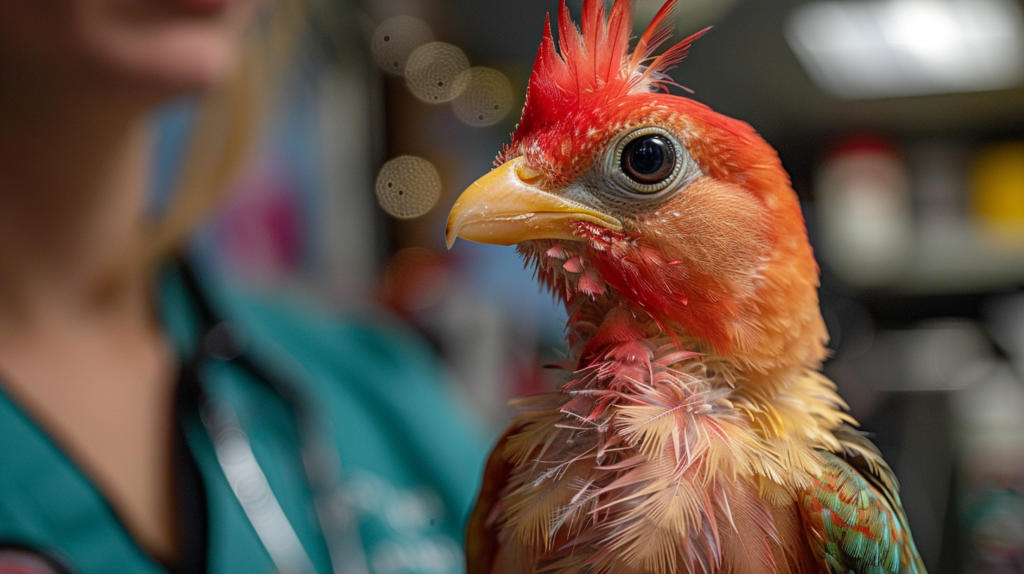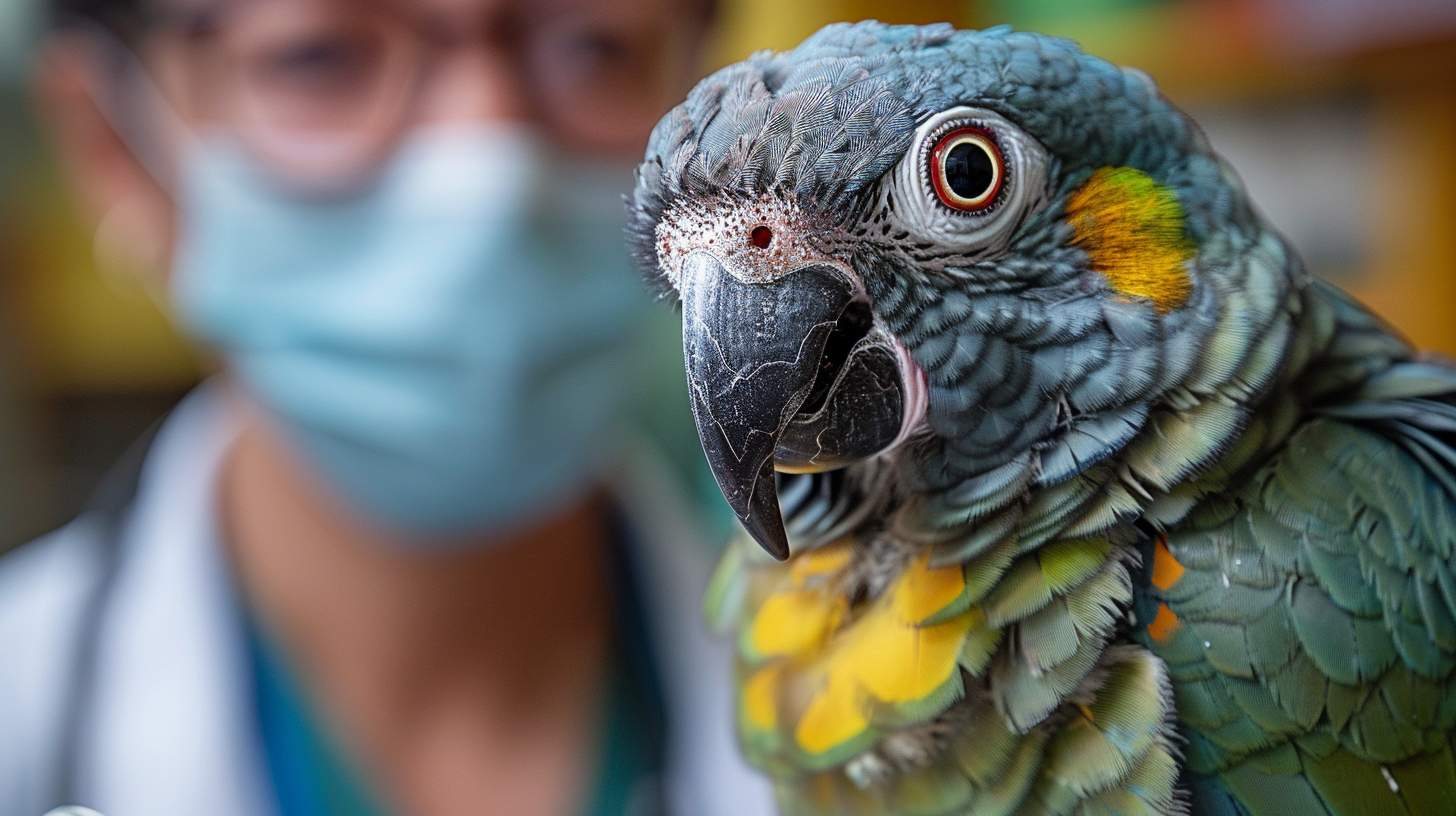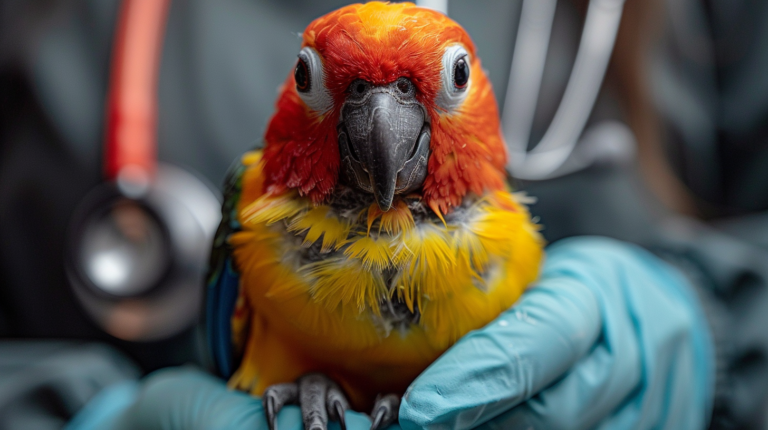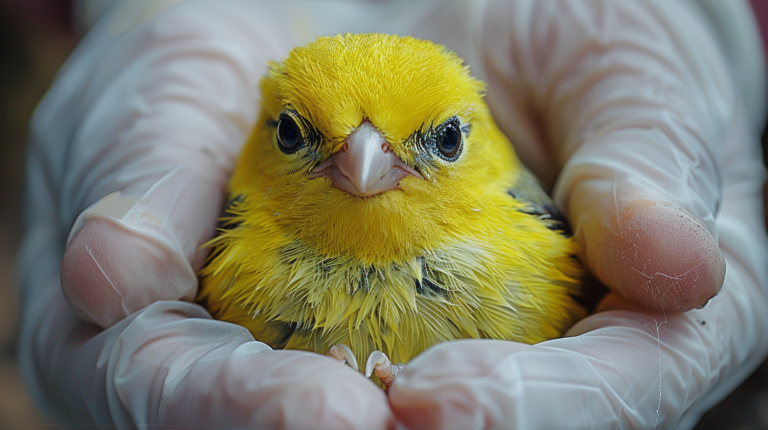Learn the 3 critical signs of Newcastle Disease in Birds every owner must recognize. Expert veterinary insights on symptoms, prevention, and emergency response for this serious viral infection.
Table of Contents
Newcastle Disease in Birds remains one of the most concerning viral infections affecting both domestic and wild bird populations worldwide. This highly contagious disease can devastate entire flocks within days, making early detection and prevention absolutely crucial for bird owners. Whether you’re caring for backyard chickens, exotic parrots, or commercial poultry, understanding the warning signs of Newcastle Disease could mean the difference between life and death for your feathered companions.
First identified in Newcastle upon Tyne, England in 1926, this viral infection has since spread globally, causing significant economic losses in the poultry industry and heartbreak for countless pet bird owners. The disease’s rapid transmission and high mortality rates make it a reportable condition in many countries, requiring immediate veterinary intervention and often government notification.

In this comprehensive guide, we’ll explore the three critical warning signs every bird owner must recognize, delve into the science behind this devastating virus, and provide actionable prevention strategies to protect your avian friends. From understanding transmission pathways to implementing biosecurity measures, this article will equip you with the knowledge needed to safeguard your birds against this serious threat.
| Warning Sign Category | Specific Symptoms | Severity Level | Time to Veterinary Care |
|---|---|---|---|
| Respiratory Distress | Difficulty breathing, open-mouth breathing, wheezing, gasping | Critical | Immediate (within hours) |
| Abnormal Breathing Patterns | Rapid breathing, labored chest movements, tail bobbing | Critical | Immediate (within hours) |
| Neurological Signs | Head tremors, neck twisting, loss of coordination | Critical | Emergency (same day) |
| Abnormal Behavior | Lethargy, depression, inability to perch normally | Moderate | Within 24-48 hours |
| Digestive Disruption | Green diarrhea, vomiting, loss of appetite | Moderate | Within 24-48 hours |
| Physical Decline | Weight loss, weakness, ruffled feathers | Moderate | Within 48-72 hours |
| Eye and Nasal Discharge | Watery eyes, nasal discharge, facial swelling | Mild to Moderate | Within 72 hours |
| Egg Production Changes | Sudden drop in laying, soft-shelled eggs | Mild | Monitor and consult within a week |
Understanding Newcastle Disease: The Silent Threat to Avian Health
Newcastle Disease, caused by the Newcastle Disease Virus (NDV), belongs to the family Paramyxoviridae and specifically targets the respiratory, nervous, and digestive systems of birds. This RNA virus demonstrates remarkable adaptability, with multiple strains varying significantly in their virulence and pathogenicity. The most dangerous strains, classified as velogenic, can cause mortality rates exceeding 90% in susceptible bird populations.
The virus spreads through multiple pathways, including direct contact with infected birds, contaminated feed and water, airborne droplets, and even through human carriers on clothing and equipment. Wild birds, particularly waterfowl and shorebirds, often serve as natural reservoirs, carrying the virus without showing clinical symptoms while potentially infecting domestic birds.
Understanding the virus’s survival characteristics is crucial for prevention. NDV can remain viable in the environment for extended periods, surviving up to several weeks in cool, moist conditions. This environmental persistence makes thorough disinfection and biosecurity measures essential components of any prevention strategy.
The economic impact of Newcastle Disease extends beyond individual bird losses. In commercial settings, outbreaks can result in mandatory quarantines, culling of entire flocks, and significant trade restrictions. The United States Department of Agriculture estimates that a major Newcastle Disease outbreak could cost the poultry industry billions of dollars in direct losses and economic disruption.
The Three Critical Warning Signs Every Bird Owner Must Recognize
1. Respiratory Distress and Abnormal Breathing Patterns
The first critical sign that should immediately alert bird owners to potential Newcastle Disease is respiratory distress. Affected birds typically develop severe breathing difficulties that progress rapidly from mild symptoms to life-threatening complications. Initial signs include open-mouth breathing, where birds stretch their necks and open their beaks while breathing, indicating significant respiratory compromise.
Wheezing, gasping, and audible breathing sounds become increasingly prominent as the disease progresses. Birds may exhibit a characteristic “sawing” breathing pattern, where each breath appears labored and accompanied by visible chest movement. This differs markedly from normal bird respiration, which should be nearly imperceptible in healthy birds.
Nasal discharge often accompanies respiratory symptoms, starting as clear fluid but potentially progressing to thick, cloudy secretions. Birds may repeatedly shake their heads or attempt to clear their nasal passages, creating a distinctive behavior pattern that experienced bird owners learn to recognize quickly.
The progression of respiratory symptoms in Newcastle Disease typically follows a predictable timeline. Within 24 to 48 hours of initial exposure, susceptible birds begin showing mild breathing irregularities. By day three to five, respiratory distress becomes severe, with birds often positioning themselves with necks extended and beaks open to facilitate breathing.
2. Neurological Manifestations and Abnormal Behavior
The second critical warning sign involves neurological symptoms that can appear simultaneously with or following respiratory distress. Newcastle Disease’s impact on the nervous system creates distinctive behavioral changes that are often unmistakable once bird owners know what to observe.
Tremors and involuntary muscle contractions frequently occur, particularly affecting the head and neck regions. Birds may exhibit a characteristic “star-gazing” posture, where they twist their necks backward and appear to look upward continuously. This neurological sign, known as torticollis, results from the virus’s interference with normal brain function and coordination.
Paralysis represents another serious neurological manifestation, often beginning with weakness in one wing or leg before progressing to complete paralysis of affected limbs. Birds may drag one wing, limp severely, or become completely unable to perch or walk normally. This progression typically occurs rapidly, sometimes within hours of initial neurological symptoms appearing.
Seizures and convulsions may occur in severely affected birds, though these dramatic symptoms often indicate advanced disease progression. Birds experiencing seizures require immediate veterinary attention, as these episodes can be fatal without proper medical intervention.
Behavioral changes extend beyond obvious neurological symptoms. Affected birds often become unusually quiet or, conversely, may vocalize excessively. Changes in eating and drinking patterns are common, with birds either refusing food entirely or exhibiting unusual feeding behaviors such as difficulty grasping food items or repeated head movements while eating.
3. Digestive System Disruption and Physical Decline
The third critical warning sign encompasses digestive system disruption and overall physical decline. Newcastle Disease significantly impacts the gastrointestinal tract, creating symptoms that are often the first indicators bird owners notice during routine care activities.
Diarrhea represents the most common digestive symptom, typically beginning as loose, watery droppings that may contain blood or mucus. The characteristic green coloration of normal bird droppings often changes to yellow, white, or bloody consistency. This change occurs because the virus interferes with normal digestive processes and can cause significant dehydration.
Vomiting or regurgitation frequently accompanies digestive distress, though distinguishing between pathological regurgitation and normal feeding behaviors requires careful observation. Birds with Newcastle Disease typically regurgitate undigested food rather than the partially digested material associated with normal feeding behaviors.
Appetite loss progresses rapidly in affected birds, with complete food refusal often occurring within 48 to 72 hours of symptom onset. This anorexia, combined with digestive dysfunction, leads to rapid weight loss and overall physical deterioration. Birds may appear visibly thinner, with prominent breast bones and reduced muscle mass becoming apparent within days.
Physical decline manifests in multiple ways beyond digestive symptoms. Affected birds often exhibit ruffled feathers, a dull appearance to their plumage, and reduced activity levels. They may spend increasing amounts of time on the ground or in lower perches, demonstrating reluctance to fly or engage in normal activities.
Transmission Pathways: How Newcastle Disease Spreads
Understanding transmission pathways is crucial for implementing effective prevention strategies. Newcastle Disease spreads through direct and indirect contact mechanisms, making it one of the most contagious viral diseases affecting birds.
Direct transmission occurs through contact with infected birds, their secretions, or contaminated materials. The virus is present in high concentrations in respiratory secretions, feces, and saliva of infected birds. Even brief contact with contaminated surfaces can result in transmission to susceptible birds.
Airborne transmission represents a particularly concerning pathway, as the virus can travel significant distances through respiratory droplets. Infected birds release viral particles through breathing, coughing, and sneezing, creating contaminated air that can infect birds several meters away. This airborne capability makes quarantine and isolation procedures critically important during suspected outbreaks.
Indirect transmission through contaminated equipment, clothing, and vehicles poses significant risks, particularly in commercial operations or multi-bird households. The virus can survive on surfaces for extended periods, making thorough disinfection essential. Farm workers, veterinarians, and even well-meaning visitors can inadvertently carry the virus between locations on their shoes, clothing, or equipment.
Wild bird populations serve as natural reservoirs for Newcastle Disease, with waterfowl and shorebirds often carrying the virus without showing clinical symptoms. These asymptomatic carriers can introduce the virus to domestic bird populations through direct contact or environmental contamination. Migratory patterns of wild birds can spread the virus across vast geographic areas, making regional outbreaks particularly challenging to control.
| Risk Factor | Risk Level | Prevention Strategy | Implementation Details |
|---|---|---|---|
| Contact with Wild Birds | High | Biosecurity Measures | Install bird netting, secure feed storage, limit outdoor access |
| New Bird Introductions | High | Quarantine Protocol | 30-day isolation, health screening, vaccination verification |
| Contaminated Equipment | Medium | Regular Disinfection | Daily cleaning with Newcastle-approved disinfectants |
| Visitor Access | Medium | Access Control | Visitor log, protective clothing, hand sanitization |
| Inadequate Vaccination | High | Vaccination Schedule | Initial series at 2-4 weeks, annual boosters, record keeping |
| Poor Ventilation | Medium | Environmental Control | Adequate air circulation, humidity control, dust reduction |
| Stressed Birds | Medium | Stress Management | Consistent routine, proper nutrition, minimal handling |
| Contaminated Water | Low | Water Quality Control | Clean water sources, regular container cleaning, filtration |
| Young Bird Susceptibility | High | Enhanced Protection | Early vaccination, isolation from adults, immune support |
Risk Factors and Vulnerable Populations
Certain bird populations face elevated risks for Newcastle Disease infection, making targeted prevention strategies essential for high-risk groups. Understanding these risk factors helps bird owners implement appropriate protective measures based on their specific circumstances.
Young birds, particularly those under six months of age, demonstrate increased susceptibility to Newcastle Disease. Their developing immune systems provide less protection against viral infections, and they often experience more severe symptoms and higher mortality rates compared to adult birds. Newly hatched chicks are especially vulnerable, with mortality rates approaching 100% in some outbreaks.
Immunocompromised birds face significantly elevated risks, including those recovering from other illnesses, receiving certain medications, or experiencing stress from environmental changes. Birds undergoing molting, breeding, or transportation stress show increased susceptibility to Newcastle Disease infection.
Overcrowded conditions create ideal environments for rapid disease transmission. Commercial poultry operations, bird shows, and multi-bird households with inadequate space between birds face heightened outbreak risks. Poor ventilation compounds these risks by allowing airborne viral particles to accumulate and persist in the environment.
Geographic location influences Newcastle Disease risks, with certain regions experiencing higher incidence rates due to wild bird migration patterns, climate conditions, and previous outbreak history. Areas with large waterfowl populations or along major migratory routes face elevated risks, particularly during migration seasons.
Prevention Strategies: Building a Fortress Against Newcastle Disease
Effective prevention requires a comprehensive approach combining biosecurity measures, vaccination protocols, and environmental management. These strategies work together to create multiple barriers against viral transmission and infection.
Biosecurity represents the cornerstone of Newcastle Disease prevention. This includes restricting access to bird areas, requiring visitors to use protective clothing and footwear, and implementing strict disinfection protocols for equipment and vehicles. Establishing separate areas for new bird quarantine prevents introduction of infected birds to existing flocks.
Vaccination protocols vary by region and bird species, with some areas requiring mandatory vaccination for certain bird populations. Consult with veterinary professionals to determine appropriate vaccination schedules based on local regulations and risk factors. Live and inactivated vaccines are available, each with specific applications and timing requirements.
Environmental management focuses on reducing viral survival and transmission within bird housing areas. This includes maintaining appropriate ventilation, controlling temperature and humidity levels, and implementing regular cleaning and disinfection schedules. Proper waste management prevents accumulation of contaminated materials that could serve as viral reservoirs.
Diagnostic Procedures and Laboratory Testing
Accurate diagnosis of Newcastle Disease requires specialized laboratory testing, as clinical symptoms can resemble other viral diseases affecting birds. Understanding diagnostic procedures helps bird owners work effectively with veterinary professionals during suspected outbreaks.
Rapid diagnostic tests provide preliminary results within hours, allowing for immediate implementation of control measures. These tests detect viral antigens or genetic material in respiratory secretions, cloacal swabs, or tissue samples. While rapid tests offer quick results, they may have limitations in sensitivity and specificity compared to more comprehensive laboratory methods.
Virus isolation remains the gold standard for Newcastle Disease diagnosis, involving growth of the virus in specialized laboratory conditions. This process typically requires several days to complete but provides definitive identification of the virus strain and its characteristics. Strain identification is crucial for determining appropriate control measures and assessing outbreak severity.
Serology testing measures antibody responses in bird blood samples, indicating previous exposure to Newcastle Disease virus. These tests help determine vaccination effectiveness and can identify birds that have recovered from infection. However, serology results must be interpreted carefully, as antibodies may persist for months after infection or vaccination.
Molecular diagnostic techniques, including PCR (polymerase chain reaction) testing, offer rapid and highly sensitive detection of viral genetic material. These methods can identify Newcastle Disease virus within 24 to 48 hours and distinguish between vaccine and field virus strains. Many veterinary laboratories now offer PCR testing as their primary diagnostic method for Newcastle Disease.
| Timeline Phase | Duration | Diagnostic Tests | Treatment Actions | Expected Outcomes |
|---|---|---|---|---|
| Initial Assessment | Day 1 | Clinical Examination | Isolation & Supportive Care | Immediate symptom documentation, bird stabilization |
| Sample Collection | Days 1-2 | Swab Samples | Quarantine Protocol | Throat/cloacal swabs collected, containment established |
| Laboratory Testing | Days 2-5 | RT-PCR Testing | Symptom Management | Virus detection and strain identification |
| Confirmation Testing | Days 3-7 | Virus Isolation | Antiviral Support | Definitive diagnosis, pathogenicity assessment |
| Regulatory Reporting | Within 24 hours | Official Notification | Movement Restrictions | Authorities notified, premises quarantined |
| Treatment Phase | Days 1-14 | Follow-up Monitoring | Intensive Care | Fluid therapy, nutritional support, antibiotics for secondary infections |
| Recovery Assessment | Days 14-21 | Serial Testing | Rehabilitation | Symptom resolution, negative test results |
| Clearance Testing | Days 21-28 | Final PCR Tests | Biosecurity Review | Virus clearance confirmed, quarantine lifted |
| Post-Recovery | Days 28+ | Surveillance | Prevention Planning | Vaccination updates, biosecurity improvements |
Treatment Options and Supportive Care
While no specific antiviral treatments exist for Newcastle Disease, supportive care measures can significantly improve outcomes for affected birds. Understanding treatment options helps bird owners work with veterinary professionals to provide appropriate care during outbreaks.
Supportive care focuses on maintaining bird comfort and addressing secondary complications. This includes providing easily digestible foods, ensuring adequate hydration, and maintaining appropriate environmental conditions. Birds with respiratory distress may benefit from humidified air or oxygen supplementation in severe cases.
Antimicrobial therapy may be prescribed to prevent or treat secondary bacterial infections that commonly occur in birds with compromised immune systems. However, antibiotics have no direct effect on the viral infection itself and should only be used under veterinary guidance.
Fluid therapy becomes crucial for birds experiencing severe diarrhea or vomiting, as dehydration can rapidly become life-threatening. Electrolyte solutions may be administered orally or through injection, depending on the bird’s condition and ability to drink voluntarily.
Nutritional support often requires hand-feeding or force-feeding techniques for birds that have stopped eating voluntarily. High-energy, easily digestible foods help maintain body condition during illness and recovery. Vitamin supplements may be beneficial, particularly vitamin A, which supports immune function and respiratory health.
Regulatory Requirements and Reporting Obligations
Newcastle Disease is a reportable disease in many countries, requiring immediate notification to veterinary authorities when suspected or confirmed. Understanding these regulatory requirements helps bird owners comply with legal obligations and contributes to broader disease control efforts.
In the United States, Newcastle Disease is regulated by the United States Department of Agriculture (USDA) Animal and Plant Health Inspection Service (APHIS). Suspected cases must be reported to state veterinary officials within 24 hours of discovery. Failure to report suspected cases can result in significant penalties and legal consequences.
Quarantine requirements vary by jurisdiction but typically involve restricting movement of birds, equipment, and personnel from affected premises. These quarantines may remain in place for several weeks or months, depending on the extent of the outbreak and local regulations. Compliance with quarantine orders is mandatory and enforced by state and federal agencies.
Testing requirements often mandate specific diagnostic procedures and laboratory protocols for suspected Newcastle Disease cases. Only approved laboratories may perform official diagnostic testing, and results must be reported through designated channels. Bird owners cannot rely on private veterinary testing alone for regulatory compliance.
Compensation programs may be available for birds destroyed due to Newcastle Disease outbreaks, though eligibility requirements and compensation levels vary by location and circumstances. These programs are designed to encourage prompt reporting and compliance with control measures by reducing financial losses for affected bird owners.
International Perspectives and Global Impact
Newcastle Disease affects bird populations worldwide, with different regions experiencing varying impacts based on their prevention strategies, wild bird populations, and trade practices. Understanding global perspectives provides context for local prevention efforts and highlights the importance of international cooperation in disease control.
Developing countries often face greater challenges in Newcastle Disease control due to limited veterinary infrastructure, inadequate diagnostic capabilities, and resource constraints. In these regions, the disease can cause devastating losses in small-scale poultry operations that provide essential protein and income for rural families.
International trade restrictions frequently accompany Newcastle Disease outbreaks, with importing countries implementing bans on poultry products from affected regions. These trade impacts can persist for months or years after outbreaks are controlled, creating long-term economic consequences beyond immediate bird losses.
Vaccination strategies vary significantly between countries, with some requiring mandatory vaccination for all poultry while others rely primarily on biosecurity measures. These different approaches reflect varying risk assessments, regulatory frameworks, and economic considerations in different regions.
Research collaborations between countries have led to improved understanding of Newcastle Disease virus characteristics, development of better diagnostic methods, and creation of more effective vaccines. Organizations like the World Organisation for Animal Health (OIE) coordinate international efforts to standardize diagnostic procedures and control measures.
Frequently Asked Questions
How long does it take for Newcastle Disease symptoms to appear after exposure?
Newcastle Disease symptoms typically appear within 2 to 15 days after exposure, with most birds showing signs within 5 to 7 days. The incubation period can vary based on factors including the virus strain, bird species, age, and immune status. Young birds and immunocompromised individuals may show symptoms more quickly than healthy adult birds.
Can Newcastle Disease spread from birds to humans?
While Newcastle Disease primarily affects birds, humans can occasionally develop mild conjunctivitis (eye inflammation) following direct contact with infected birds or contaminated materials. This human infection is rare and typically resolves without treatment. However, people working with infected birds should use appropriate protective equipment and practice good hygiene.
Is it safe to eat eggs from birds that have been vaccinated against Newcastle Disease?
Yes, eggs from vaccinated birds are completely safe for human consumption. Newcastle Disease vaccines do not affect egg quality or safety, and there is no withdrawal period required for eggs from vaccinated birds. The vaccines help protect birds from infection without creating any food safety concerns.
How effective are Newcastle Disease vaccines in preventing infection?
Newcastle Disease vaccines are highly effective when administered properly and according to recommended schedules. Vaccination can provide 80-95% protection against infection, though effectiveness may vary based on the vaccine type, virus strain, and individual bird factors. Regular booster vaccinations are typically required to maintain protection.
What should I do if I suspect Newcastle Disease in my birds?
If you suspect Newcastle Disease, immediately isolate affected birds, contact your veterinarian, and notify appropriate regulatory authorities. Avoid moving birds or equipment from your property, and restrict access to your bird areas. Quick action can help prevent spread to other birds and ensure proper diagnostic testing is performed.
How long can Newcastle Disease virus survive in the environment?
Newcastle Disease virus can survive in the environment for several weeks under favorable conditions, particularly in cool, moist environments. The virus is more fragile in hot, dry conditions and direct sunlight. Proper disinfection with approved products can eliminate the virus from contaminated surfaces and equipment.
Emergency Response Planning for Bird Owners
Developing an emergency response plan before Newcastle Disease strikes can significantly improve outcomes and reduce stress during an actual outbreak. Effective planning involves preparation, communication protocols, and resource allocation strategies tailored to specific circumstances.
Emergency contact lists should include primary and backup veterinarians, local animal health officials, and relevant regulatory agencies. These contacts should be easily accessible and updated regularly to ensure accurate information during emergencies. Include after-hours contact information when available, as Newcastle Disease emergencies often occur outside normal business hours.
Supply preparation involves maintaining adequate quantities of disinfectants, protective equipment, and basic medical supplies. Emergency kits should include items such as disposable gloves, masks, shoe covers, approved disinfectants, and basic medications commonly used in supportive care. Regular inventory checks ensure supplies remain current and available when needed.
Communication protocols establish clear procedures for notifying family members, employees, or partners about outbreak situations. These protocols should include information about quarantine requirements, visitor restrictions, and ongoing operational changes. Clear communication helps prevent inadvertent virus spread and ensures everyone understands their responsibilities during emergencies.
Documentation procedures help track important information during outbreak situations, including affected birds, symptoms observed, treatment provided, and regulatory communications. This documentation serves multiple purposes, including veterinary care continuity, regulatory compliance, and insurance claims processing.
For more expert pet care tips and product recommendations, visit https://BlithePet.com your trusted source for pet wellness.
Conclusion
Newcastle Disease in Birds represents a serious threat that requires vigilant monitoring, comprehensive prevention strategies, and immediate action when symptoms appear. The three critical warning signs—respiratory distress, neurological manifestations, and digestive system disruption—provide bird owners with essential knowledge for early detection and intervention.
Understanding transmission pathways, risk factors, and prevention strategies empowers bird owners to protect their feathered companions through proactive measures rather than reactive responses. From implementing robust biosecurity protocols to developing comprehensive emergency response plans, preparation remains the most effective defense against this devastating disease.
The global nature of Newcastle Disease requires ongoing vigilance and cooperation between bird owners, veterinary professionals, and regulatory authorities. By staying informed about current research, maintaining appropriate vaccination schedules, and following recommended biosecurity practices, bird owners can significantly reduce their risk of Newcastle Disease outbreaks.
Remember that early detection and prompt veterinary intervention provide the best outcomes for affected birds. Don’t hesitate to contact veterinary professionals when suspicious symptoms appear, as rapid response can mean the difference between manageable illness and catastrophic loss.
Have a similar experience with your pet? Share it in the comments below!





